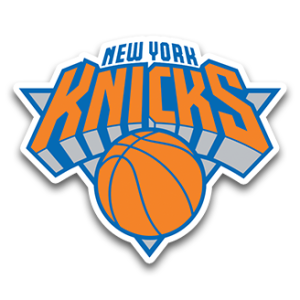Who Wore it Best? Knicks #35
11/02/2024 11:00 AM
Trying to keep the series alive with number 35.
Alright, I slacked on this one long enough, but the series must go on. The problem with Who Wore it Best #35 isn't for lack of talent, but all the talent achieved their success outside of wearing a New York Knicks uniform. Of the 11 players to have worn the number, the three biggest names to stick out the most are Terry Cummings, Doug Christie, and Clarence Weatherspoon.
Doug Christie: After bouncing around several teams in the 90s, Doug Christie found a key role with the Sacramento Kings, becoming one of their standout contributors during their peak years in the early 2000s. Playing alongside Chris Webber, Mike Bibby, and Peja Stojaković, Christie started in all 355 games he played for the Kings between 2000 and 2005. Prior to breaking out in Sac-Town, Christie had played for the Lakers, Raptors, and appeared in 25 games for the Knicks over the span of two seasons. During his first season with the Knicks in 1994-95, he wore #7 and played in 12 games; in his second season, he switched to #35 but was held out of the rotation by Head Coach Don Nelson. Although Christie hardly contributed on the floor, he did compete in the 1996 Slam Dunk Contest while wearing the #35. Christie ended up having a 15-year career in the league, and finished in the top-5 voting for Defensive Player of the Year twice.
Terry Cummings: Unlike Doug Christie who was still in the early stages of his NBA career when he joined the Knicks, Cummings was at the tail end of his illustrious 18-year career. Cummings was a force to be reckoned with during the first half of his career. As a rookie with the San Diego Clippers, Cummings was named the 1982-83 Rookie of the Year with averages of 23.7 points, and 10.6 rebounds per game. He even finished 13th in MVP voting as a rookie. Over the span of his first 7 seasons in the league with the Clippers and the Milwaukee Bucks, Cummings averaged 20 plus points and 7 plus rebounds per game.
In 1989, Cummings was traded to the San Antonio Spurs and alongside David Robinson, the dynamic duo down low, helped turn the team's fortunes around from the previous season, with 56 wins, a year-over-year improvement by 35 wins.
In 1989, Cummings was traded to the San Antonio Spurs, where he teamed up with David Robinson to form a formidable frontcourt duo. Their partnership helped the Spurs make a dramatic turnaround, improving by 35 wins to finish with 56 victories. During his first three seasons with San Antonio, Cummings averaged over 18 points per game. However, a knee injury in 1992 sidelined him for all but eight games in the 1992-93 season. After returning, Cummings struggled to regain his prior form, never averaging more than 8 points per game over his remaining eight years in the league. This final phase of his career included a season back in Milwaukee, and stops with the Seattle Supersonics, Philadelphia 76ers, Golden State Warriors, and a brief 30-game stint with the Knicks during the 1997-98 season.
Clarence Weatherspoon: In the early '90s, Clarence Weatherspoon became the face of a young Philadelphia 76ers organization eager to rebuild after the departure of All-Star forward Charles Barkley. Drafted 9th overall in 1992, Weatherspoon was the first major piece of the Sixers' rebuilding efforts. His second season was the best of his career, where he averaged an impressive double-double of 18 points and 10 rebounds per game. The Sixers continued adding talent, selecting Shawn Bradley and Sharone Wright in 1994, Jerry Stackhouse in 1995, and finally, Allen Iverson with the first pick in 1996. By then, with Bradley no longer a member of the team, the Sixers entered the 1996 season with a core of Iverson, Stackhouse, Weatherspoon, and Derrick Coleman, who had been acquired from the Nets for Bradley. Despite the team's "New Spirit, New Attitude" mantra, the Sixers struggled to improve, and Weatherspoon's role and stats declined with each new addition.
The Sixers nearly traded Weatherspoon to the Celtics in 1997, but the deal was scrapped due to Dino Radja failing his physical. Feeling sidelined, Weatherspoon grew unhappy in Philadelphia. After shopping him around during most of the 1997-98 season, the Sixers eventually sent him to the Golden State Warriors in February of 1998.
Weatherspoon's time with the Warriors lasted only 31 games, and after the 1998 season, he spent the remaining seven years of his NBA career with multiple teams, including Miami, Cleveland, New York, and Houston. During his tenure with the Knicks from 2001 to 2003, he was a reliable contributor both as a starter and off the bench. Across 150 games in New York, Weatherspoon started in 61, averaged 26 minutes per game, and proved pivotal on the boards, securing 7.4 rebounds per game. By the end of his 13-year career, Weatherspoon held solid averages of 11.5 points and 7.5 rebounds per game.
Believe it or not, this wraps up the "Dirty Thirties" of "Who Wore it Best." With Rasheed Wallace standing alone as the only Knick to don #36, and no players ever sporting #37, #38, or #39, we enter our forties with the next segment WWIB segment.


